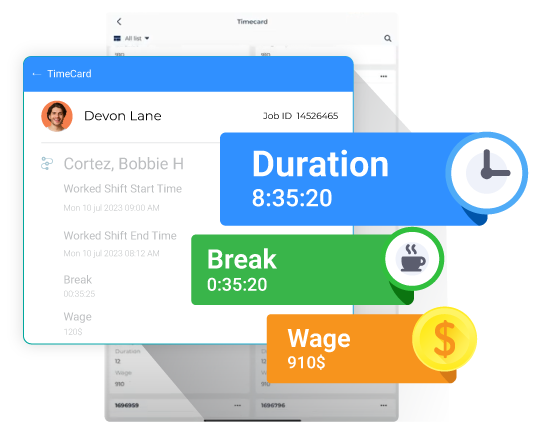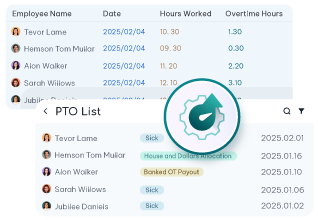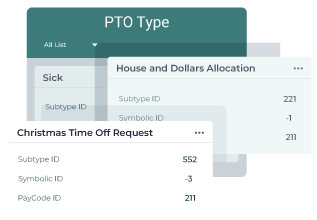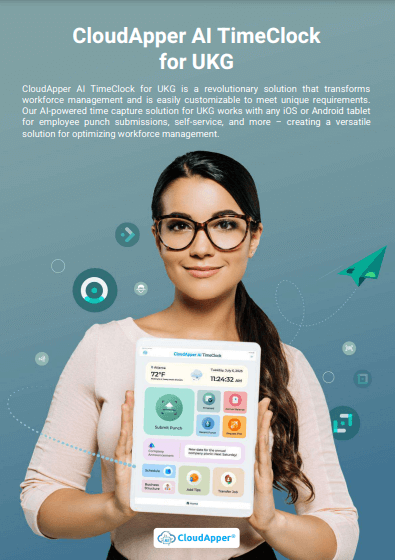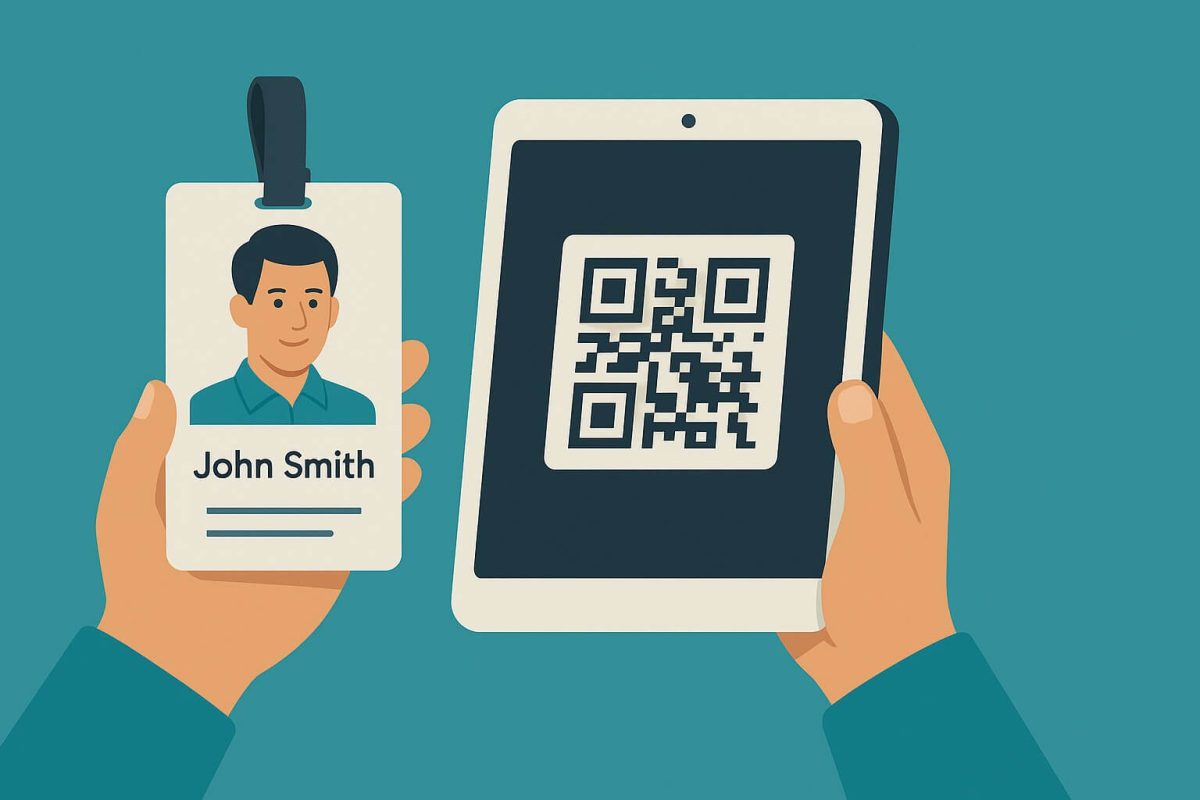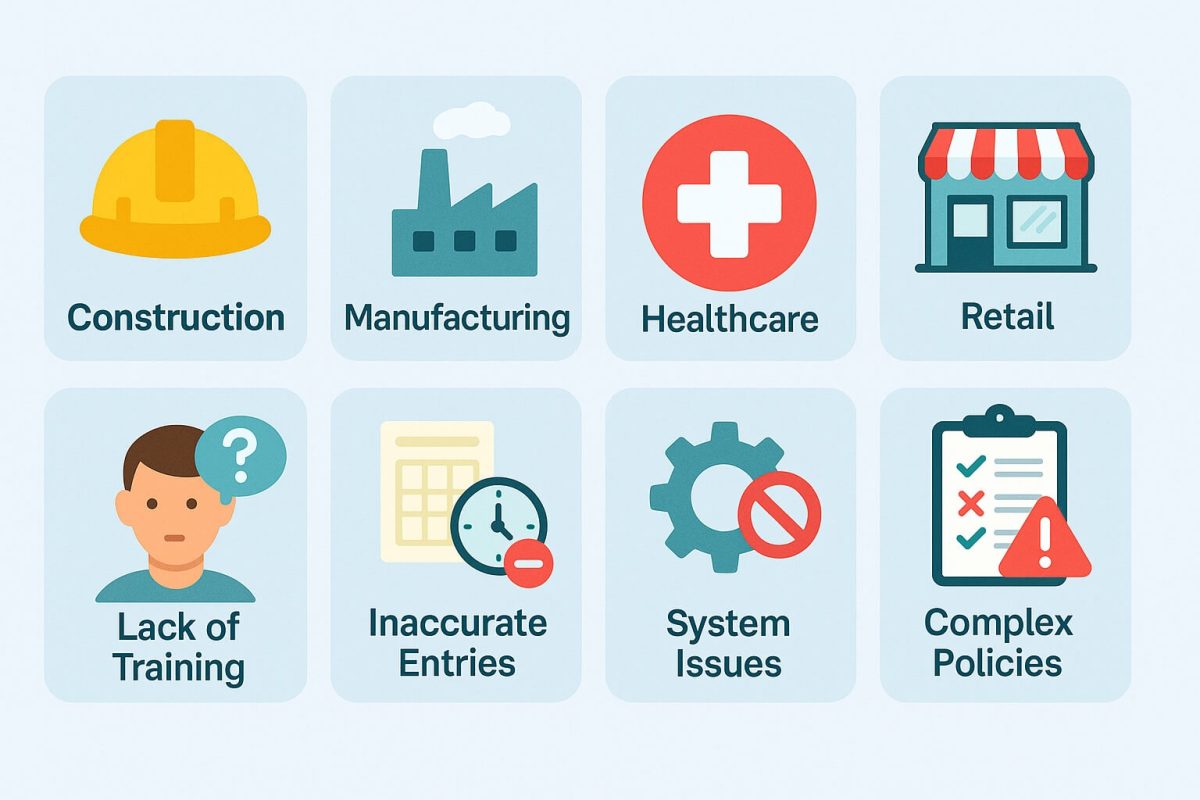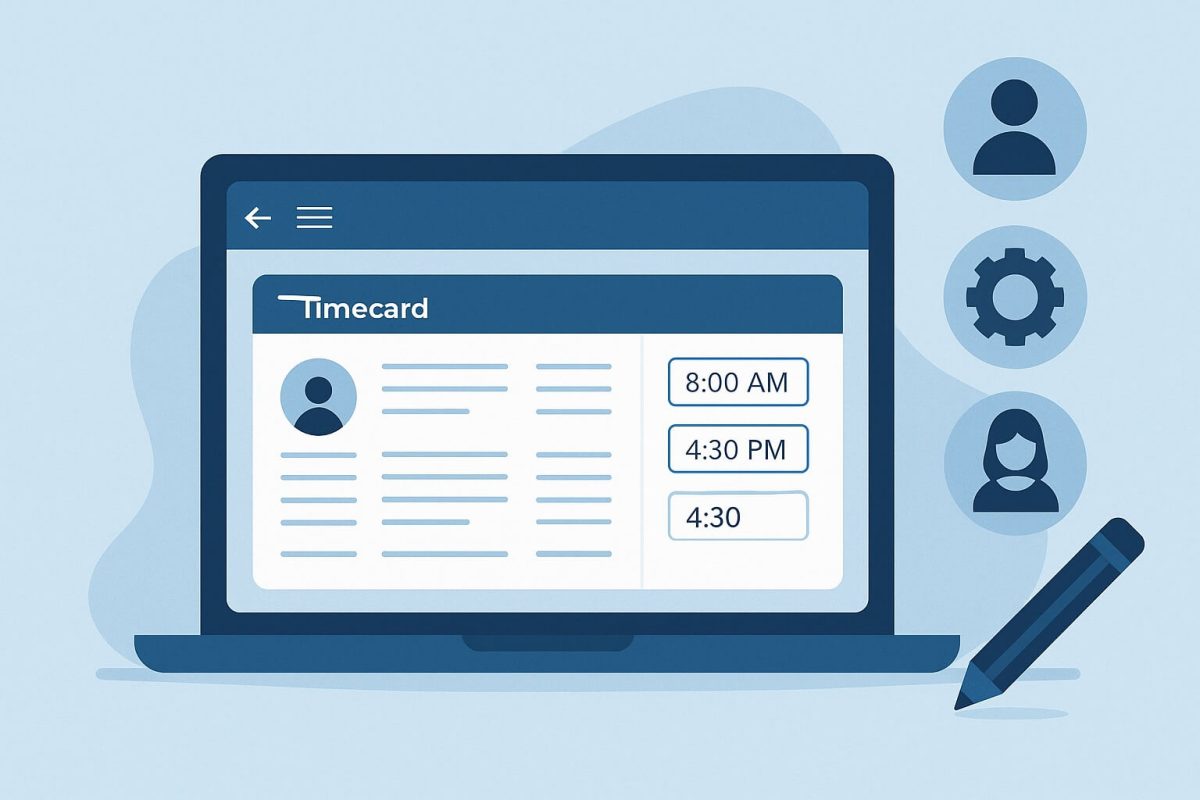CloudApper AI streamlines labor tracking in manufacturing, providing customizable workflows that integrate seamlessly with UKG/Kronos. By automating data collection, it enhances accuracy and efficiency, empowering HR and operations teams to adapt quickly without costly customizations.
Time is money, especially in manufacturing.” This saying couldn’t be more accurate when it comes to tracking labor in a manufacturing environment. In manufacturing, the ability to monitor labor effectively is the cornerstone of accurate project costing, productivity analysis, and operational efficiency. Every hour worked – whether in production or engineering – holds valuable insights that can directly impact the bottom line. But here’s the challenge: labor tracking can quickly become complex, especially when systems need constant customization and maintenance to align with a company’s specific workflows.
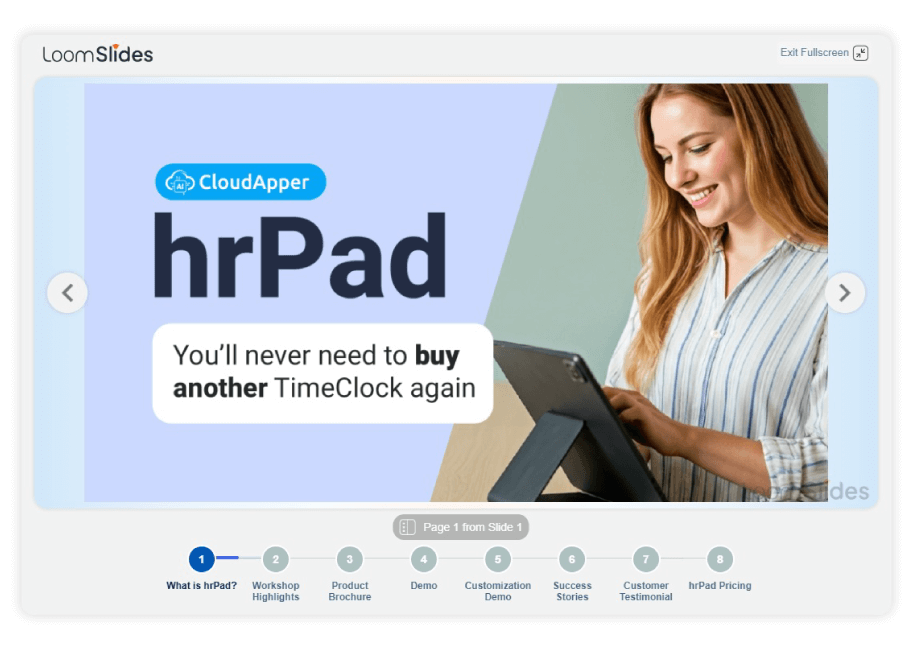
For more information on CloudApper AI TimeClock for UKG visit our page here.
Studies show that effective labor tracking can improve manufacturing efficiency by up to 20%. In a real-world scenario, consider the challenge of categorizing worked hours across different tasks and projects. For example, professional labor, such as engineering time, is often logged via a computer or mobile device, while manufacturing floor labor requires employees to clock in and record specific tasks through a time clock. Both require accuracy and speed to ensure productivity is not compromised. Yet, traditional solutions like UKG/Kronos, while powerful, often require costly, complex customizations to fit these varying needs – and that’s where the CloudApper AI platform shines.
With CloudApper, you’re not just getting another layer of software; you’re gaining an adaptive tool that’s fully customizable to fit your unique operations. Imagine a platform that integrates seamlessly with UKG/Kronos but eliminates the need for endless, expensive customizations. That’s CloudApper – a solution that empowers HR and operations teams with a simple, automated way to track labor, regardless of department or labor category.
CloudApper’s AI platform allows manufacturers to streamline labor tracking by creating workflows that suit their exact needs. Whether it’s automating time capture on the production floor through a time clock or allowing engineers to log hours from their laptops, CloudApper makes it easy. For example, if you need to add a new field to record specific job information or set up automatic reminders for break times, CloudApper’s drag-and-drop editor lets you do it in minutes – no IT team required. This flexibility not only saves time but also reduces the reliance on costly, third-party consultants for system changes.
Automation is a significant benefit of using CloudApper for labor tracking. With CloudApper, your data collection is both seamless and accurate, removing manual entry errors and improving data integrity. When employees can easily log hours against specific tasks or projects, HR teams gain instant access to precise labor data for all categories. This accuracy is essential for analyzing productivity, ensuring fair pay, and reducing compliance risks.
Perhaps one of the most valuable benefits of CloudApper’s platform is the ability to empower HR and operations teams to make quick adjustments. Suppose a manufacturing manager needs to add a custom tracking field for a new project or change the method of data entry. CloudApper’s customizable platform makes this possible without involving developers or incurring extra costs. It’s a straightforward solution that keeps up with your changing business needs.
In manufacturing, every hour counts, and the way those hours are tracked can either drive growth or stall progress. By automating and customizing labor tracking with CloudApper’s AI platform, manufacturers gain a powerful tool that not only simplifies UKG/Kronos integration but also frees up time and resources to focus on what matters most – efficient operations and quality production. CloudApper makes labor tracking an asset, not a headache, turning labor data into insights that drive better decisions and ultimately, a more productive manufacturing environment.





